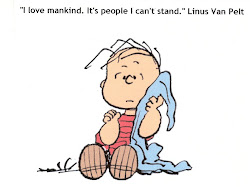I recently finished reading Diné: A History of the Navajos by Peter Iverson. Iverson teaches at Arizona State University and his book is a fairly decent review of the history of the Navajos and how they became the Navajo Nation (Navajos refer to themselves as Diné, which simply means “the people”). The greatest weakness of Iverson’s approach though is his breaking up the narrative into eras (like any good history prof I guess) which are organized as distinct chapters. This chronological approach becomes a bit awkward and disjointed because of the number of (usually) unrelated topical discussions thrown into each chapter.
I knew a fair bit about the Navajos through my consulting work with the federal Bureau of Indian Affairs, but even with the flaws in Iverson’s approach, I admit I learned a ton more. Iverson has a pretty well-balanced treatment of the “Long Walk,” the forced relocation some 9000 Navajo men, women and children 300 miles to a settlement area outside of their reservation in 1864. Iverson also covers modern economic and political issues - right up to his book’s publication year of 2002. A small tidbit of information that I’m reluctant to label as “trivia” relates to the Navajo art of detailed rug weaving by woman and young girls. As expensive as a genuine Navajo rug is to purchase, as recently as the 1980s women effectively earned perhaps two dollars per hour for their talented efforts and netted in the neighborhood of $2,500 year.
One more factoid (this one not in Iverson’s book): most American Indians prefer being referred to as Indians. We non-Indians tend to assume that Native American is the more politically correct term these days. But when the federal government was planning a national museum, the majority of Native Americans preferred that it be called the National Museum of the American Indian – as it is. Opened in 2004, it sits in a prominent place on the National Mall, close to the Capitol Building. Worth visiting. http://www.nmai.si.edu/

6 comments:
Can I read it next?
Yep.
Dene is the word for "person" or "people" throughout the Athabaskan languages. Navajo and Hopi are southern outliers - most of their linguistic relatives are in NW Canada and Alaska. They were the second wave of immigration across the Bering Strait. The Navajo likely arrived in the American SW 10,000 years ago. As these things go, they probably kicked someone else out. The language superfamily is called Na Dene, or even, if you are quite adventurous, Dene Caucasian, because it seems to be related to Siberian languages.
Most tribes call themselves "The People," or "The Real People." Cf German, Das Volk.
I'll add a tidbit (again, not trivial): the indigenous groups we Americans might term "Indians" in Canada (those not of Inuit decent at least) are generally referred to as First Nations peoples.
I like the term "First Nations."
In my contact with Indians, including two aunts by marriage who were both 1/8 Indian, I have heard them refer to themselves as Indian. Not Native American.
I also have some Indian ancestry.
What the PC forget is that Indians are also descended from immigrants. First Immigrants, we should call Indians/Native Americans.
Post a Comment